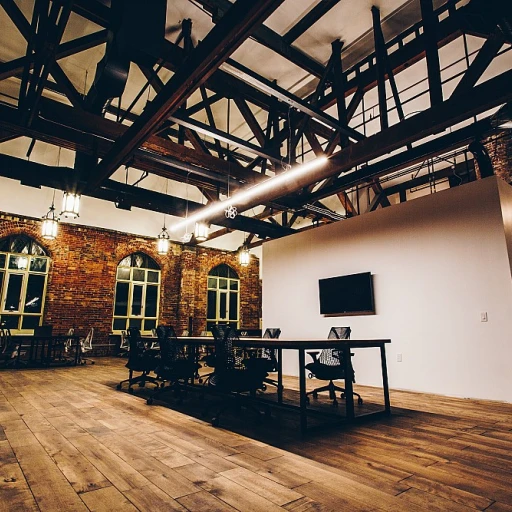
Assessing Current Office Needs
Initial Assessment of Office Requirements
Embarking on an office refurbishment journey in the Arabian Emirates starts with an important step: assessing current office needs. A comprehensive evaluation of the existing space provides invaluable insights necessary for guiding your refurbishment project effectively. At this stage, the focus should be on understanding the operational demands and identifying areas that require improvements or upgrades.
Begin by considering the office space efficiency—is your workspace optimized for daily activities, or do obstacles inhibit productivity? Identifying bottlenecks in office layout will help in streamlining space planning and ensuring the new design supports your business goals. Consider inviting input from employees who utilize the office environments daily; their feedback will be instrumental in shaping a productive space.
The next steps will involve setting a budget, which will ensure the financial feasibility of the refurbishment project, and embarking on the design build to produce a layout that enhances functionality. Remember, initiating the refurbishment process with a detailed needs assessment not only lays the foundation for a successful office fit out but also informs every other aspect, including choosing the right furniture, engaging competent contractors, and managing timelines effectively.
Setting a Realistic Budget
Establishing a Practical Financial Framework
The journey of an office refurbishment in the Arabian Emirates necessitates a thorough understanding of the current financial landscape. Setting a realistic budget lays the groundwork for ensuring a smooth renovation process. This step requires meticulous attention to detail to anticipate expenses that might arise during the office fit.
Firstly, consider the project's scope and the resources required. Be it a minor refresh or a more extensive office renovation, a well-defined financial plan must cover every aspect from construction to furniture acquisition.
- Consider the costs of design build and materials
- Factor in potential adjustments in the timeline
- Account for contingency funds to manage unforeseen issues during the refurbishment project
Consulting with a dedicated project manager is a prudent step in this planning process. Their insights can help navigate financial pitfalls while ensuring that the commercial space aligns with the business vision. Such expertise is essential, as it balances creative office design solutions with financial realities.
Moreover, precise budgeting fosters better coordination among the project team. Transparent financial objectives pave the way for seamless communication, aligning all parties towards the project's successful completion. Proper budget management ensures the space planning and fit outs remain on track, meeting the office building's functional and aesthetic goals. For a comprehensive guide on office management in the UAE, consider exploring optimizing category management.
Designing a Functional Layout
Crafting a Practical and Inviting Workspace
In the journey to revamp your office in the Arabian Emirates, tailoring a functional layout is a pivotal stage that will determine the success of the office refurbishment. During this phase, it is crucial to consider both the aesthetics and the practical aspects of the space, ensuring that they work harmoniously to boost productivity and foster a thriving work environment. An efficient office layout not only contributes to the overall functionality of the space but also aligns with the project scope defined earlier. Begin the process by involving your project manager and team in understanding the flow of operations and identifying the areas that require change. This collaboration will help in recognizing ineffective use of space, ultimately leading to a more organized planning process. A critical component of the design is the integration of commercial furniture that complements the interior architecture of your office building. Selecting the right office furniture can transform even a small office space into a dynamic and comfortable area that supports both individual work and collaborative efforts. By incorporating flexible and adaptable pieces, you will be able to respond better to future needs without necessitating a complete overhaul in the office fit. Ensure that the design build includes a balance between open and private spaces, catering to different work styles and preferences among your employees. Consider factors such as natural lighting, air quality, and personalized spaces, all of which contribute to a healthier and more inviting work environment. This will not only enhance employee satisfaction but also improve overall business performance. Prioritizing the effective use of space will set the foundation for a successful refurbishment project. To advance your plans and maximize efficiency within your workspace, consider incorporating a space management system that can offer flexibility and adaptability in office design. In conclusion, designing a functional layout is about mixing creativity with practicality, all while ensuring the needs of your business and team are met. This meticulous space planning step will lay the groundwork for the construction phase, keeping the refurbishment project aligned with the original timeline and budget plan.Choosing the Right Contractors
Selecting the Best Fit for Your Office Refurbishment
In the realm of office refurbishment, choosing the right contractors is a pivotal step that will significantly influence the entire project. This stage involves more than simply picking a powerhouse construction firm; it's about forging the right partnerships that will help achieve your vision. First, consider the specific requirements of your office renovation. The contractors should have proven expertise in commercial refurbishment projects similar to yours and should also align with your project scope, budget, and timeline. Here are key factors to consider:- Experience and Reputation: Carefully review the portfolio of potential contractors. Their past office fit outs and build projects can offer insights into their capabilities and reliability.
- Financial Stability: A financially secure contractor can manage resources efficiently without unexpected delays.
- Technical Capability: Ensure they possess the necessary technical skills and equipment to handle your office space requirements.
Managing the Refurbishment Timeline
Overseeing the Office Refurbishment Timeline
Effectively managing the timeline of your office refurbishment is crucial for the success of the project. This phase involves synchronizing various activities and resources to ensure the project is completed on schedule, crucially preventing any disruption to your business operations. There are several key tasks involved in this stage:- Develop a Detailed Plan: Collaborating with your project manager, formulate a comprehensive plan that outlines each stage of the refurbishment. This plan should include clear milestones and deadlines to track progress within the refurbishment project.
- Coordinate With Contractors: Engage with contractors to align their schedules with your timeline. Effective communication will help in mitigating any potential delays that may arise during the construction or installation phases.
- Anticipate Delays: Despite thorough planning, unforeseen challenges can occur. By anticipating and planning for potential delays, you can incorporate buffers in your timeline to minimize their impact on the overall project.
- Monitor Progress: Regularly review the progress of the renovation and adjust the timeline as necessary. This proactive approach ensures that the refurbishment stays on track and within the planned schedule.
Ensuring Compliance with Local Regulations
Adhering to Local Regulations
Ensuring compliance with local regulations is a crucial step in any office refurbishment process within the Arabian Emirates. From assessing the current office needs to managing the refurbishment timeline, each phase requires careful consideration of legalities. Understanding and complying with the region's building codes is the responsibility of the project team and involves rigorous research and coordination with the local authorities. The commercial sector demands strict adherence to these regulations to avoid potential legal issues, which could impact the overall success of the refurbishment project. Some key aspects to focus on include:- Building Permits: Securing the appropriate permits before any construction or renovation begins is essential. Ensuring that your office space meets all regulatory standards is not only a legal obligation but also promotes a safe working environment.
- Safety Standards: Adhering to fire safety, ventilation, and other industrial standards is mandatory. This ensures both employee well-being and business continuity.
- Zoning Laws: Assessing the office building's zoning restrictions and allowances will guide ahead planning to optimize your office space effectively without infringing on any legal boundaries.












